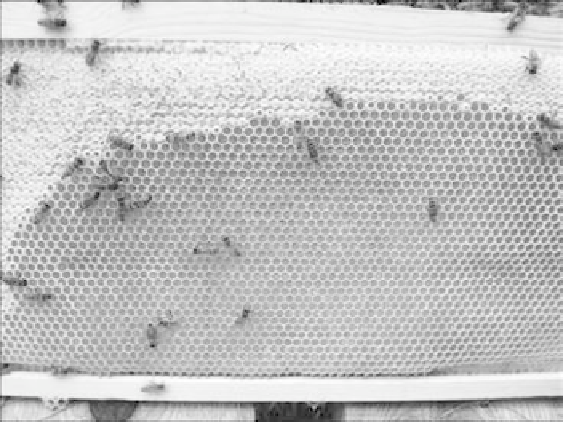Agriculture Reference
In-Depth Information
Bees will fill individual cells with honey, and when it is ready, they cap it with beeswax to store it. This honey
frame is not fully capped. Notice the white wax caps in the upper-left corner and across the top. When the
entire frame is capped, it is ready for harvest.
(Photo courtesy of Emma Jane Hogbin)
You may need to feed your bees during this time so they have enough food stores to make it
through the winter in good shape. This is only necessary if they don't have enough food collected
on their own. One of the simplest mixtures is a 1 part water to 1 part sugar mix. But if your bees
are in bad shape you may want to increase the amount of sugar so it's a much thicker, syrupy mix
of 1 pound sugar to 1 pint of water.
There are several types of feeders for feeding bees, including entrance feeders, simple handmade
jar and platter feeders, and zipper-lock storage baggie feeders (which, because it's placed inside the
hive, is less likely to attract robbers). I don't recommend the division board feeders because they can
drown your bees and if you are trying to help a colony through a rough patch, the last thing you
want to do is kill them off.
thOrny MatterS
If you look near the entrance of a beehive, you'll see guard bees there protecting the hive from intruders.
Bees are attracted to sources of nectar, including the honey collected by other hives. A weak hive is sus-
ceptible to robber bees—workers from other honeybee hives that will come in to steal the nectar stores
from your bees. When your hive is new, and during the winter when bees are clustered for warmth, an
entrance reducer will make the wide entrance small enough to be more easily guarded as well as prevent
mice from coming into the hive.
Late winter is the time you need to be ready to inspect your colony again. The first nice warm day
in January, be ready to check it out. Is your queen still alive? Do your bees have food and brood,















